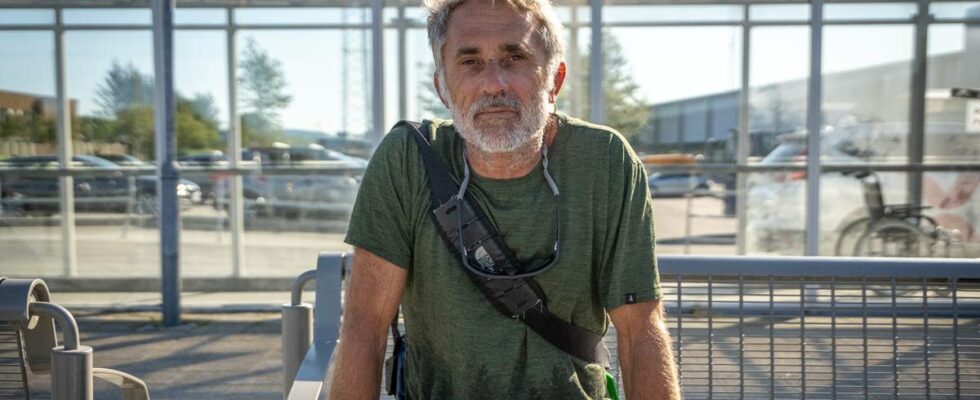Nicolas Gely (54) from Toulouse in France expected much lower temperatures and more comfortable summer weather on a Norwegian holiday in Lofoten this week. Included in the luggage were warm down jackets – which have remained in the suitcase during the entire trip. Nordland has been basking in the sun for the last few days, with temperatures of between 25-28 degrees. – It is very nice holiday weather, but it is abnormally hot here for us to be at the beginning of August. It’s not good, says Gely outside Bodø Airport before he starts his journey home. Too hot for a “coolcation” This summer, travel companies have seen an increasing trend of tourists from countries in southern Europe on a “coolcation” in Norway. The expression can be translated as “cool holiday”. Gely has not noticed anything about that phenomenon. – I expected 50/50 between rain and good weather. I never thought it would be as hot as it is now, he answers questions about what he had expected. Nicolas Gely travels home to more warmth. He would have liked even colder weather on holiday in Norway. Photo: Benjamin Fredriksen / news – It was a mistake to come here considering the weather, says the Frenchman. In Toulouse it is well over 30 degrees. That’s why he wanted to spend his holiday somewhere where it wasn’t so hot. – I brought a lot of clothes for nothing, says the French tourist. Which still has to chuckle a little. Because of course it has been a good Norwegian holiday. Package slam Also Hanna Fuchs from Germany went on the same package slam as Gely. She will visit friends in Bodø and Lofoten. – I packed a lot of warm clothes, but it’s not very cold right now. Hanna Fuchs has brought warm clothes to Norway. It remains to be seen whether they will remain in the luggage throughout the holiday. Photo: Benjamin Fredriksen / news The German tourist appreciates cooler weather in the summer, but is not against the heat prevailing in the north right now. – It is more comfortable. Back home in Germany it is around 30 degrees right now. But I like this weather here quite well. Her friend Jasmine Liebherr appreciates holidaying in Norway. Both the temperatures and fewer people have added flavor. – In southern Europe right now it is far too hot and too many people, she says. Jasmine Liebherr likes that there are not as many people in northern Norway as in the busiest tourist spots in southern Europe. High pressure The heat in northern Norway is due to a high pressure north of Finnmark and the Kola Peninsula. The high pressure has produced temperatures of around 25 degrees in several places. On Thursday this week, however, there will be a change of weather in Nordland – to the delight of tourists from southern Europe on a “coolcation”. – It looks like a new low pressure system will arrive on Wednesday and Thursday, which will hit Nordland and parts of Troms. While the rest of Troms and Finnmark will be shielded from the low pressure, on-duty meteorologist Emily Carin Rønning told news before the weekend. That’s why Europe is getting warmer Heat waves in Europe come more often, last longer, and reach higher temperatures than before. Researchers are now clear that this is largely due to man-made greenhouse gas emissions. Swipe to read more about how summers have changed, and what we can do with that. AP How much warmer it has become The probability of heat waves in the world is almost three times as great now, as it was before the industrial revolution. In recent years, large parts of Europe have had maximum temperatures around 10 degrees warmer than normal. AP Every degree counts Scientists have been studying human influence on the climate since the early 20th century, and the evidence has grown stronger since then. Nevertheless, the world’s emissions have continued to increase. If global warming reaches 2 degrees, the number of heat waves in the world will probably double from today’s level. 4 degrees of warming can double the number of heat waves once more, according to the UN climate panel. But now something is happening. AP Is there hope? It may be that the world has finally reached the emission peak. The less greenhouse gases we release, the less these changes will continue to escalate. Many big cities have also become better at handling heat waves. Such measures have already meant that fewer people die from the heat than they would otherwise. Published 06.08.2024, at 20.13 Updated 06.08.2024, at 21.23
ttn-69
– It was a mistake to come here – news Nordland

